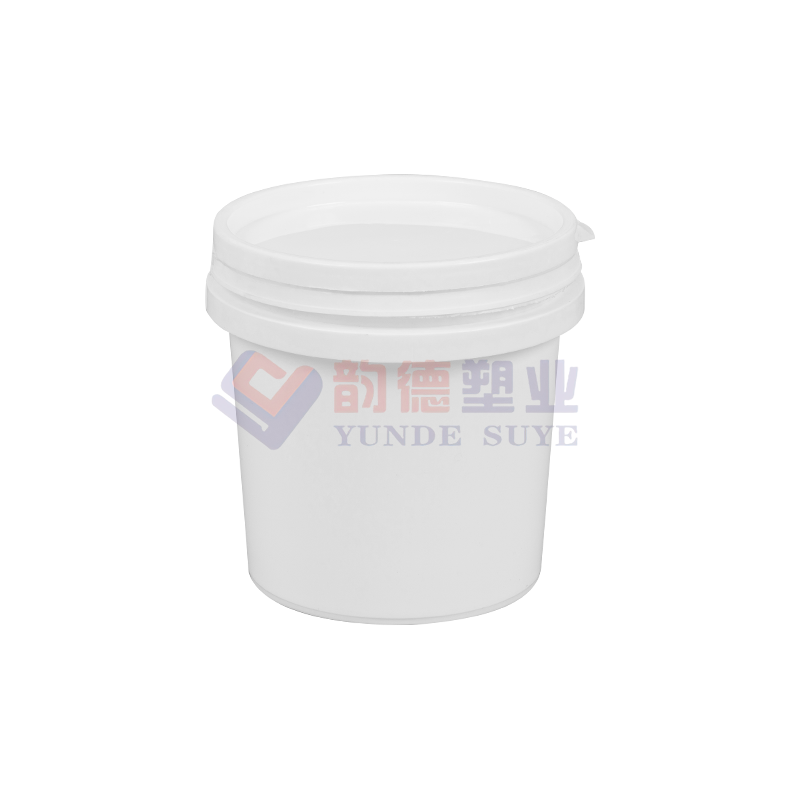Fluorinated Round Bottles
Can PP plastic barrels effectively prevent liquid leakage or air entry?
Sealing structure and leak-proof performance of PP plastic barrels
The ability of PP plastic barrels to prevent liquid leakage and air ingress mainly depends on the design of their sealing structure. Usually, PP plastic barrels are sealed by means of a screw cap or snap cap combined with a sealing ring. The sealing ring is generally made of food-grade silicone or rubber material, which can fill the gap between the cap and the barrel mouth to form a relatively tight sealing effect. Reasonable sealing design can not only reduce the leakage of liquid during transportation or storage, but also block the entry of air and slow down the oxidation or deterioration of internal substances. Therefore, the design of the sealing structure and the selection of materials are the key factors that determine the leak-proof performance of PP plastic barrels.
The influence of the physical properties of PP material itself on leak-proofing
PP plastic barrels are made of polypropylene material, which has good chemical stability and physical strength. Polypropylene has a smooth surface and strong hydrophobicity, is not easy to absorb liquids, and reduces the possibility of liquid penetration. In addition, PP material has good corrosion resistance and has good tolerance to most common liquids including water, oils and some chemical reagents. These physical properties make the barrel body of the PP plastic barrel itself effectively prevent liquid leakage, and at the same time, it has extremely low permeability to air, which helps to protect the quality of the liquid in the barrel.

Factors affecting the sealing effect of PP plastic barrels
Although PP plastic barrels have certain sealing capabilities, their sealing effect is still affected by multiple factors. First, the aging or deformation of the sealing ring material will reduce the sealing performance, which may cause liquid leakage or air ingress. Secondly, whether the lid is installed in place is also an important factor. Failure to completely tighten or the buckle is not fastened may cause the seal to fail. In addition, if the barrel body is deformed or damaged by external force, it will also affect the sealing effect. Temperature changes may also cause the material to shrink or expand, resulting in changes in the sealing gap and affecting the leak-proof effect. Therefore, these factors need to be paid attention to during use and storage to maintain the sealing performance of PP plastic barrels.
The importance of preventing air from entering PP plastic barrels
The air contains oxygen and moisture, which may cause oxidation, deterioration or microbial growth to the liquid in the barrel. Effective sealing can reduce air ingress and extend the shelf life of liquids, especially for items such as food, beverages and medicines that require high storage conditions. The sealing design of PP plastic barrels, combined with its material characteristics, has the function of preventing air from entering to a certain extent, but the actual effect is affected by the state of the sealing ring and the use environment. Therefore, ensuring that the sealing parts are intact and operated correctly is a necessary condition for maintaining the quality of the liquid in the barrel.
Comparison table of sealing performance of common PP plastic barrels
In order to have a more intuitive understanding of the sealing performance of different types of PP plastic barrels, you can refer to the following table, which lists the main parameters of several common PP plastic barrels and their sealing performance.
| Model | Material Type | Seal Ring Material | Sealing Method | Leakage Prevention Rating | Air Barrier Capability | Applicable Temperature Range |
|---|---|---|---|---|---|---|
| Standard Model | Food-grade PP | Food-grade Silicone | Screw cap + Seal ring | Good | Fairly good | -20°C ~ 100°C |
| Thickened Model | Food-grade PP | Food-grade Silicone | Snap-on cap + Seal ring | Fairly good | Fairly good | -30°C ~ 110°C |
| Economy Model | Ordinary PP | Rubber ring | Screw cap | Average | Average | -10°C ~ 90°C |
The impact of use and maintenance on sealing performance
The leakage and air ingress prevention performance of PP plastic barrels depends not only on the design and materials, but also on daily correct use and maintenance. Frequent opening and closing of the lid can easily cause the sealing ring to wear or deform, and violent operation should be avoided. Regularly checking the integrity and cleanliness of the sealing ring can prevent foreign matter from being embedded and causing sealing failure. During storage, the barrel body should be prevented from being subjected to heavy pressure or scratched by sharp objects, which will affect the sealing performance. For liquids stored for a long time, care should be taken to avoid exposure to extreme temperature environments to prevent material aging from affecting the sealing effect.
Leakage prevention requirements in different application scenarios
Different application scenarios have different requirements for the sealing performance of PP plastic barrels. For example, the food industry has high requirements for hygiene and sealing. Preventing air from entering can extend the shelf life of food; the chemical industry pays more attention to preventing liquid leakage and odor volatilization, and sealing performance is directly related to safety and environmental protection; daily household use pays more attention to ease of use and reusable sealing effects. According to different needs, PP plastic barrels also have different sealing designs to meet the performance standards of specific scenarios.

 English
English 中文简体
中文简体 Español
Español عربى
عربى











